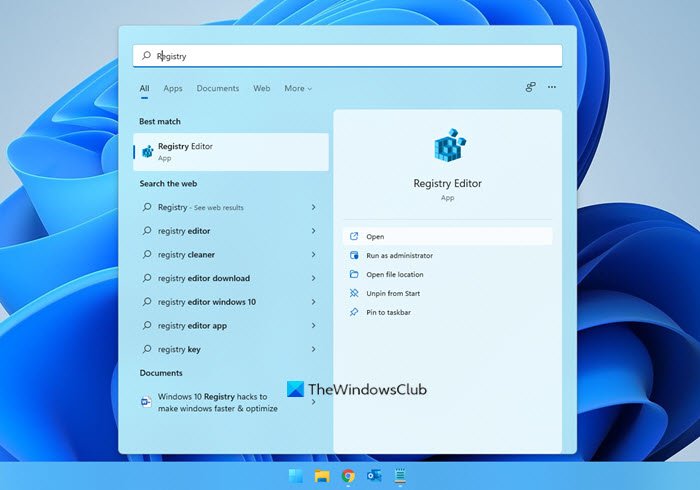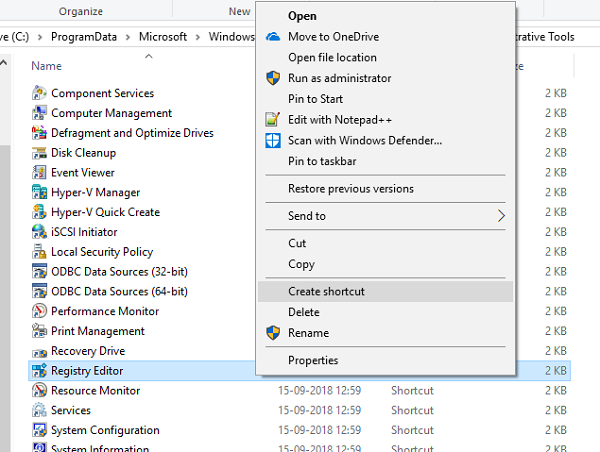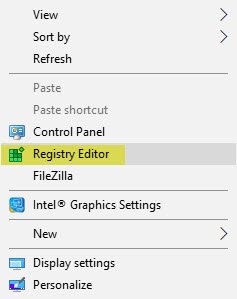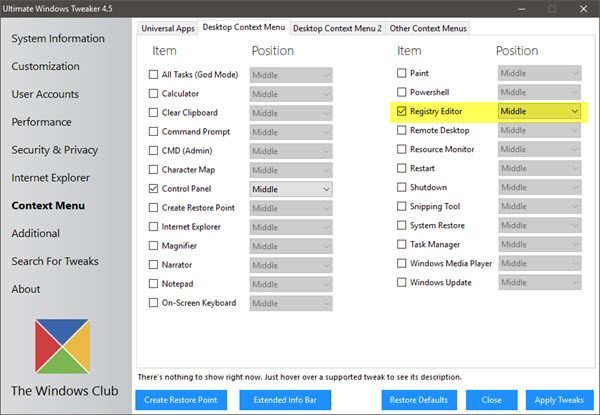While Windows 11/10 comes with tons of settings you can change, Microsoft manages things like these via the Windows Registry. Any parameter which you see on Windows has a setting which in turn has a registry entry. That said, we would warn that Registry settings should not be modified by anyone who doesn’t have any idea about it. However, if you have an administrator account, and know how to manage the Registry, there are multiple ways to open the Registry Editor or REGEDIT in Windows 11/10.
Open Registry Editor in Windows 11/10
These are the methods you can use open the Registry Editor or REGEDIT on Windows computers:
- Using Windows Search box
- Create a desktop shortcut
- Assign Keyboard shortcut for Registry Editor
- Using Command Prompt or PowerShell
- Using Run prompt
- Using Context Menu.
Before you begin, you should know that the Group Policy Editor is available in Windows Pro, Windows Enterprise, and Windows Education editions only, and not in Windows Home – and so to make changes users have to use the Registry Editor.
1] Using Windows Search box

- Press the Windows Start button to open the Start Menu
- Type “registry.”
- It should list the Registry Editor app on the top
- Click open to open it.
This allows you to open Registry Editor with admin privileges.
Read: How to create a Registry Key.
2] Create a shortcut to open Regedit

If you use it more often, it is best to create a shortcut on the Desktop.
- Open the Run prompt
- Type “C:\ProgramData\Microsoft\Windows\Start Menu\Programs\Administrative Tools” and hit Enter
- Find the program “Registry Editor,”
- Right-click on it and choose Create shortcut.
- When you double click on the shortcut, it will open the Registry Editor.
3] Assign Keyboard shortcut for Registry Editor
You can also create a Keyboard shortcut to open the Windows Registry Editor.
To do this, locate the newly created Registry Editor shortcut on the desktop. Right-click on it and click on Properties. Go to the Shortcut tab.
Click on the blank text field of a Shortcut key. Press any key to assign the sequence for the shortcut. Remember whatever key you choose, CTRL+Alt will be automatically prefixed to it.

For instance, if you chose the key ‘U’, the sequence Ctrl +Alt + U is created as the shortcut key for Registry Editor.
You can also provide administrator privileges to the Registry Shortcut.
4] Using Command Prompt, Terminal or Power Shell
- Open Terminal, PowerShell or Command Prompt (Admin)
- Type regedit and hit Enter to open Registry Editor.
5] Using Run prompt
Probably the easiest method, and also the most common one.
- Open the Run prompt (WIN+R)
- Type regedit, and hit Enter
- You may get prompted with the UAC prompt
- Choose Yes, and it will launch the Registry Editor programme
6] Using Context Menu

Use our freeware Ultimate Windows Tweaker to add Open Registry Editor entry to the desktop right-click context menu.

You will see the tweak under Context Menu > Desktop Context Menu.
So that’s how you can open the Registry Editor in multiple ways in Windows 11/10.
Before you make any changes, it is always a good idea to back up the Registry first.
Leave a Reply